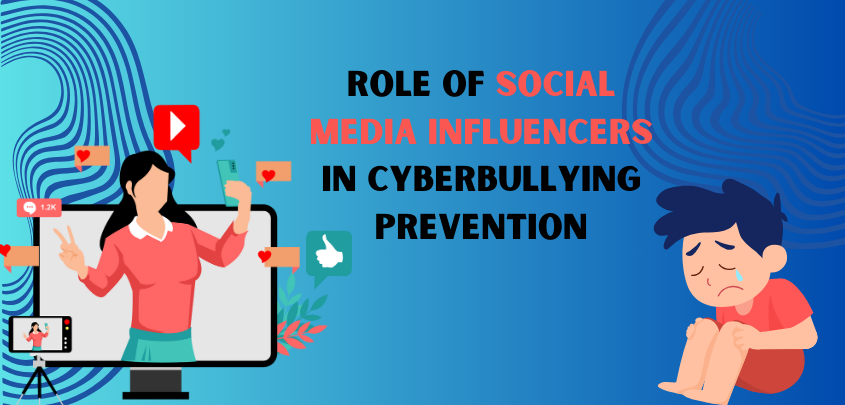
22, Jul, 2024
The Role of Social Media Influencers in Cyberbullying Prevention: Guiding Kids to Positive Role Models
Social media has become a vital aspect of our lives in the current digital era, particularly for children and adolescents. Cyberbullying is one of the most urgent issues it presents, despite its many positive aspects. Children and teenagers are exposed to more dangerous conduct while they traverse the internet world. Influencers on social media, however, can be extremely helpful in stopping cyberbullying by pointing children toward positive role models and creating a welcoming online community.
The Influence of Social Media
Social media influencers wield significant power in shaping the opinions, behaviors, and attitudes of their followers. These influencers, who range from celebrities to everyday individuals who have garnered substantial followings, have the ability to reach millions of people with a single post. For young people, influencers often serve as role models, providing guidance on everything from fashion and lifestyle to mental health and social issues.
Cyberbullying: A Growing Concern
Cyberbullying involves the use of electronic communication to bully a person, typically by sending messages of an intimidating or threatening nature. According to recent studies, a significant percentage of teenagers have experienced cyberbullying in some form. The impacts of cyberbullying can be severe, leading to issues such as anxiety, depression, and even suicidal thoughts. As such, addressing cyberbullying is crucial for the well-being of young people.
Positive Role Models: Influencers as Catalysts for Change
Social media influencers have the potential to be powerful allies in the fight against cyberbullying. By leveraging their platforms, influencers can promote positive behavior and provide guidance on how to handle bullying. Here are several ways influencers can contribute to cyberbullying prevention:
- Raising Awareness: Influencers can use their reach to raise awareness about the issue of cyberbullying. By sharing personal stories or highlighting the experiences of others, they can help their followers understand the seriousness of the issue and the impact it can have on individuals.
- Promoting Positive Behavior: Influencers can set examples of positive behavior by demonstrating kindness, empathy, and respect in their interactions online. By doing so, they can inspire their followers to adopt similar attitudes and behaviors, creating a more supportive online community.
- Providing Resources and Support: Influencers can share resources, such as helplines, websites, and organizations dedicated to combating cyberbullying. They can also provide advice on how to handle bullying, such as reporting it to the relevant authorities or seeking support from trusted adults.
- Encouraging Bystander Intervention: Influencers can encourage their followers to take action when they witness cyberbullying. By promoting the importance of bystander intervention, they can help create a culture where bullying is not tolerated, and victims are supported.
- Collaborating with Organizations: Many influencers collaborate with organizations dedicated to cyberbullying prevention. These partnerships can amplify their message and provide additional resources to their followers. For example, influencers can participate in campaigns, host events, or create content that aligns with the mission of these organizations.
Guiding Kids to Positive Role Models
Parents, educators, and guardians also play a crucial role in guiding kids to positive role models on social media. Here are some strategies to help children and teenagers follow influencers who promote positive behavior:
- Educate about Influencer Impact: Teach children about the influence that social media personalities can have on their lives. Help them understand the importance of following individuals who exhibit positive behavior and values.
- Curate a List of Positive Influencers: Create a list of influencers known for their positive impact, kindness, and advocacy against cyberbullying. Encourage children to follow these individuals and engage with their content.
- Discuss Online Interactions: Have open conversations about the content children encounter online and the interactions they observe. Discuss the importance of empathy, respect, and standing up against bullying.
- Monitor Online Activity: While respecting their privacy, keep an eye on children’s online activity to ensure they are following positive role models and not engaging with harmful content.
- Encourage Critical Thinking: Teach children to critically evaluate the content they consume and the behavior of the influencers they follow. Encourage them to question whether the influencers’ actions align with their values and the kind of person they aspire to be.
Conclusion
Social media influencers have a unique opportunity to impact the lives of young people positively. By promoting awareness, positive behavior, and providing support, they can play a vital role in preventing cyberbullying. Parents and guardians must also actively guide children towards following positive role models. Together, we can create a safer and more supportive online environment, ensuring that the digital age is one of empowerment rather than harm for the younger generation.
